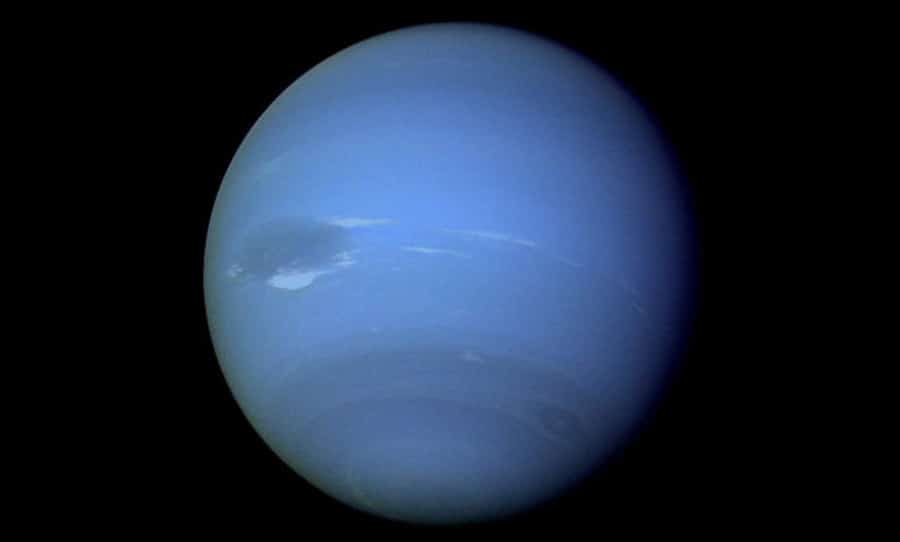930
Neptune, the eighth and outermost planet in our solar system, has a few facts about itself that might also interest you
The planet Neptune: Facts worth knowing
The ice giant Neptune impresses with some facts that are well worth knowing.
- With a diameter of around 49,500 kilometers, Neptune is the fourth largest planet in our solar system and has an impressive mass, making it one of the most massive planets.
- Neptune is a gaseous planet consisting mainly of hydrogen and helium, but also includes an icy mantle layer of water ice and ammonia covering its surface.
- Neptune’s atmosphere is characterized by strong winds and storms that can reach speeds of up to 2,000 km/h, making it one of the stormiest places in the solar system.
- It appears blue-greenish, which is due to the presence of methane in its atmosphere, which reflects sunlight and gives it its characteristic color.
- The planet has a strong magnetic field, which is about 27 times stronger than that of the Earth and protects its atmosphere from the solar wind.
The mysterious moons and rings of Neptune
In addition to its imposing appearance, Neptune also has a multitude of moons and rings that further enrich its mysterious profile.
- Neptune is orbited by at least 14 known moons, including the largest moon Triton, which has an unusual retrograde orbit and is probably a captured Kuiper Belt object.
- The moons of Neptune exhibit a variety of geologic features, including craters, volcanoes, cracks and plains, indicating a complex and active surface formation.
- Neptune also has a ring system, which consists of dark particles and is less pronounced than Saturn’s more famous ring system.
- The moons and rings of Neptune give scientists important clues about the formation and evolution of the planetary system and provide insights into the cosmic processes in the outer solar system.
- Space probes such as Voyager 2 have explored Neptune and its moons up close, collecting valuable data and images that deepen our understanding of this fascinating planet.

